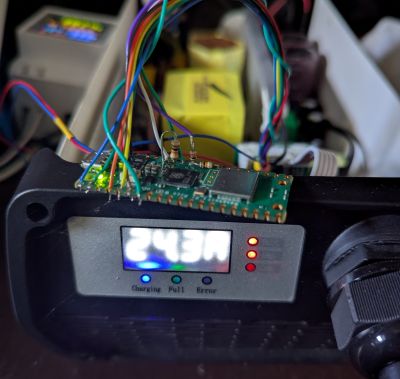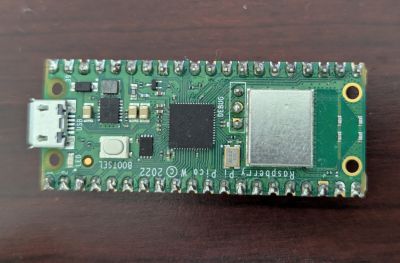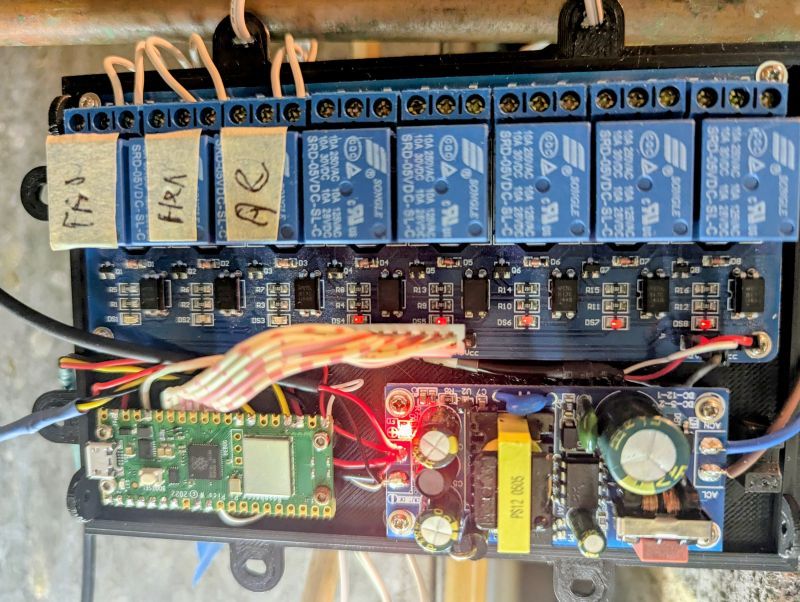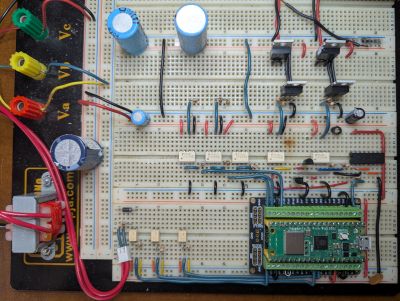DIY Home Automation Projects
Discover Homatica’s collection of privacy-first home automation projects, blending Raspberry Pico W, MicroPython, MQTT, and Home Assistant for modular, scalable solutions. From smart HVAC controllers to efficient battery chargers, each project is a step toward a smarter, DIY-driven home.

LiFePO4 Battery Charger Modification
Upgraded a legacy charger by replacing its PIC chip with a Raspberry Pico W. Custom MicroPython code manages an output relay with a voltage dead band, syncing to 800W sun-tracked solar panels. A PWM-controlled cooling fan adjusts dynamically, and power data is published via MQTT for seamless Home Assistant integration.
Tech Stack: Raspberry Pico W, MicroPython, Resonant Power Supply, MQTT, Home Assistant
Why It’s Cool: This project maximizes solar efficiency while ensuring battery safety, all with real-time monitoring in your smart home dashboard.

Generalized Pico W IoT Firmware
This firmware turns any Pico W into a dynamic IoT agent for Home Assistant. Devices auto-register via API, retrieve GPIO configuration from a local database, and communicate over MQTT. The same code runs across all devices, adapting to their wiring and role—whether sensing or controlling.
Tech Stack: Raspberry Pico W, MicroPython, MQTT, MariaDB, REST API, Home Assistant
Why It’s Cool: Scalable, privacy-first automation with zero cloud dependencies and full local control.
Project Page
Smart HVAC Controller
This project optimizes a legacy furnace using multiple Pico W boards and temperature sensors. A servo modulates gas flow for efficiency, while a custom Python program analyzes sensor data, stores it in MariaDB, and publishes actions via MQTT to Home Assistant. Each Pico W runs identical software, auto-registering with the database for scalable control.
Tech Stack: Raspberry Pico W, MicroPython, RC Servo, MQTT, MariaDB, Python, Home Assistant
Why It’s Cool: Save energy and control your HVAC remotely with a modular, privacy-first system.
Project Page
Learning Power Factor Correction with Pico W
This experiment explores Power Factor Correction (PFC) to understand efficient AC power draw. Using a Pico W, I learned zero-cross detection, PWM shaping, and voltage feedback to smooth power consumption. An opto-isolator ensures safe experimentation, perfect for diving into microcontroller capabilities.
Tech Stack: Raspberry Pico W, MicroPython, PWM, Feedback Control, Opto-isolator Circuit
Why It’s Cool: A hands-on way to learn how PFC reduces energy waste and enhances power efficiency.
More DIY home automation projects coming soon! Check out my blog for tutorials and updates.
Learn About Homatica’s Mission